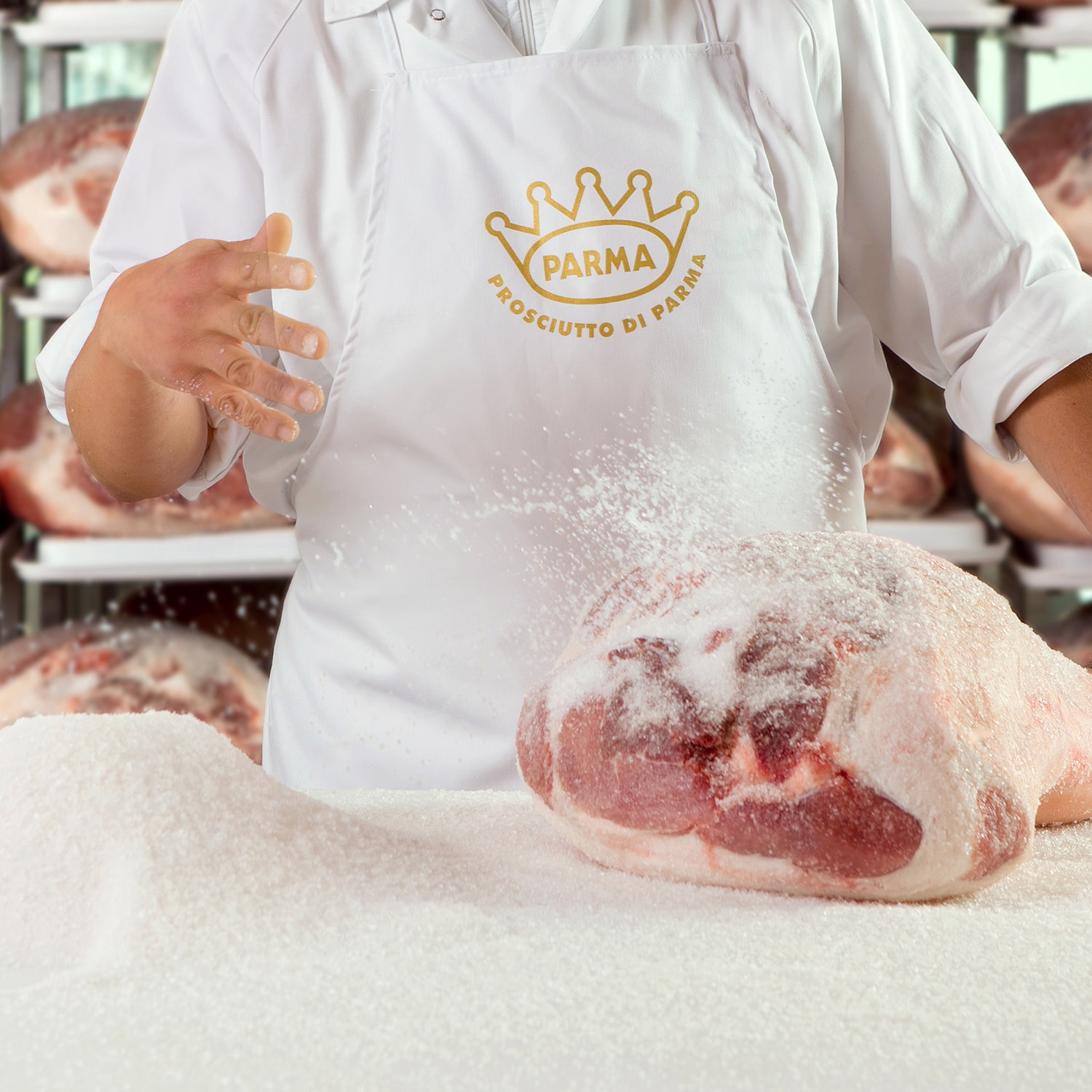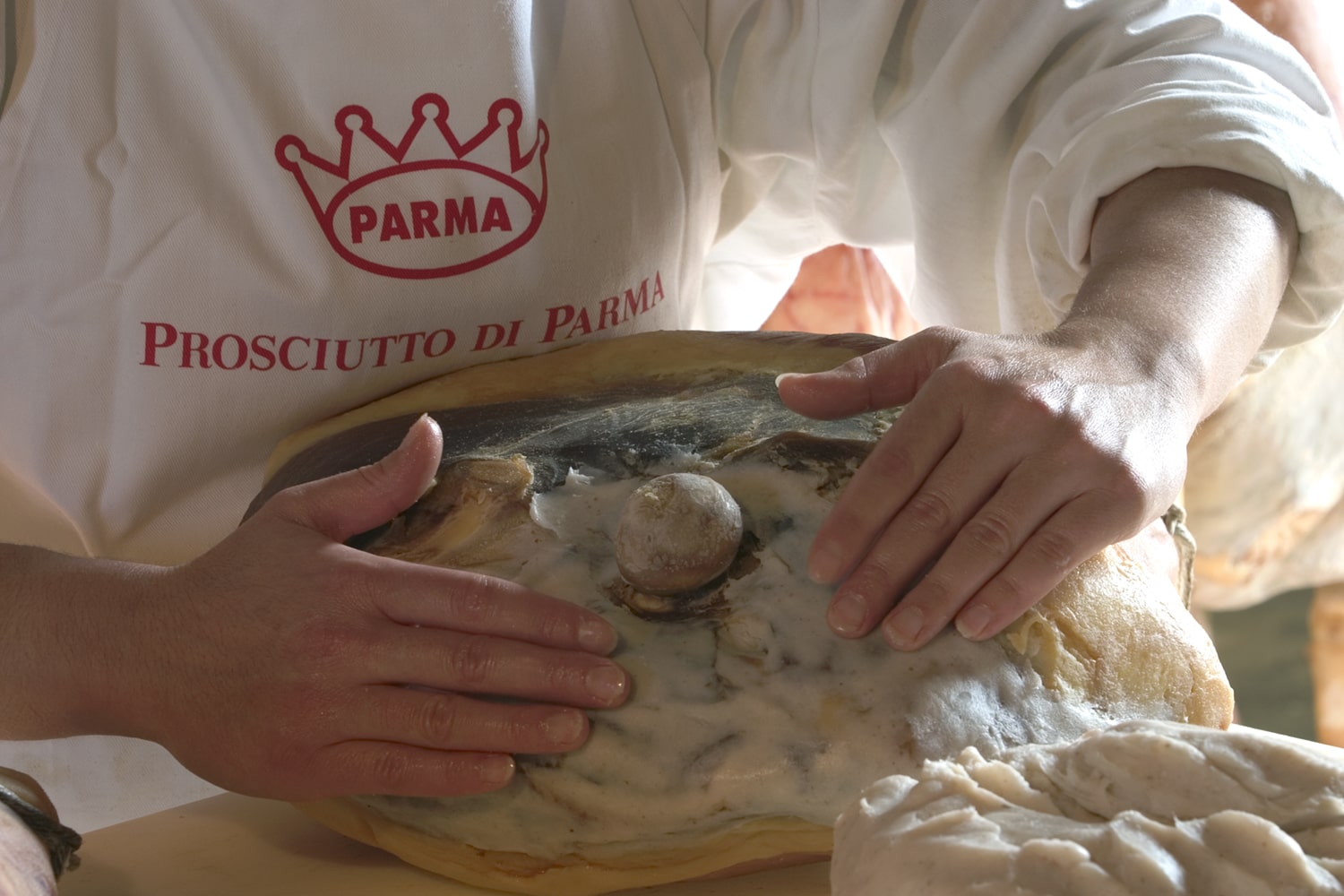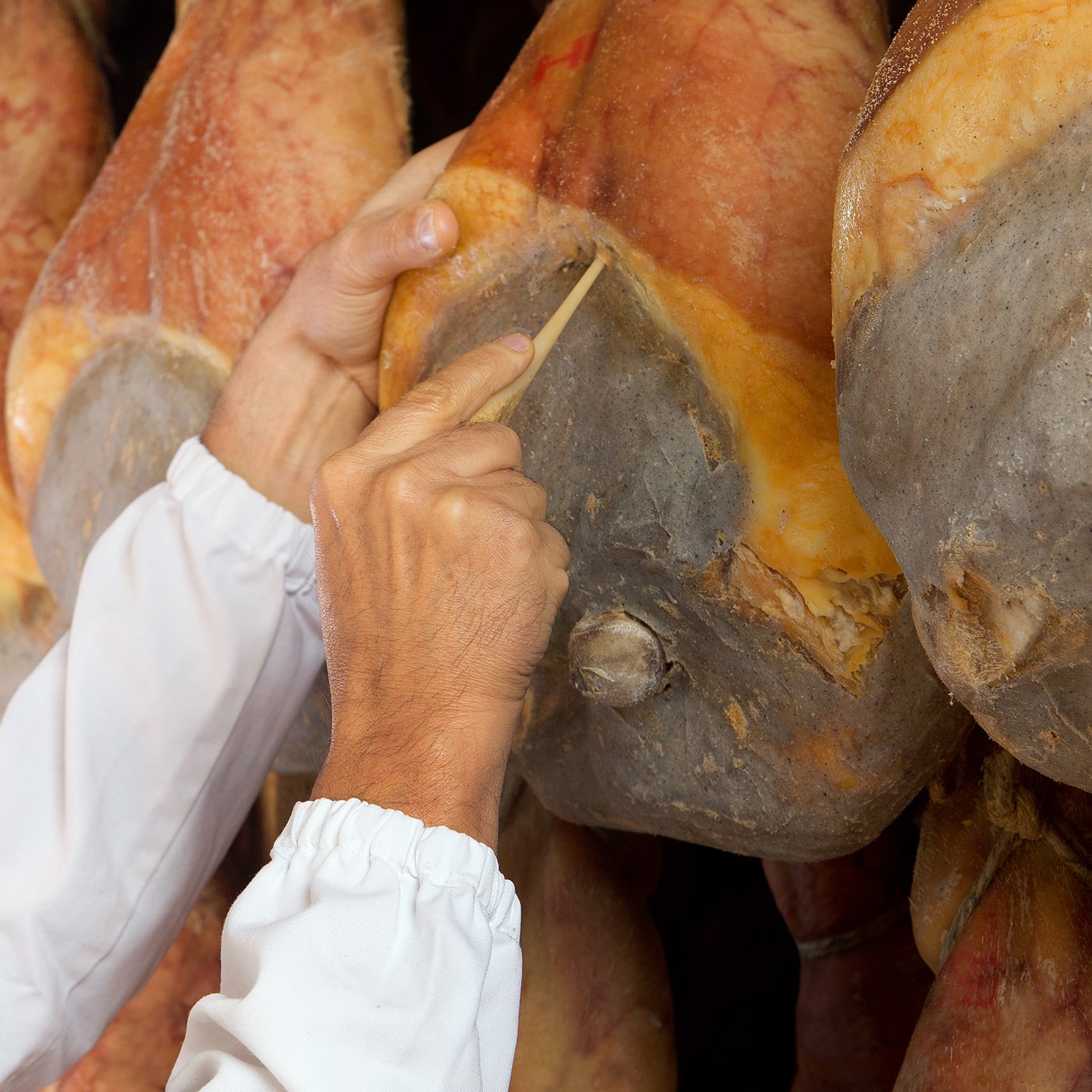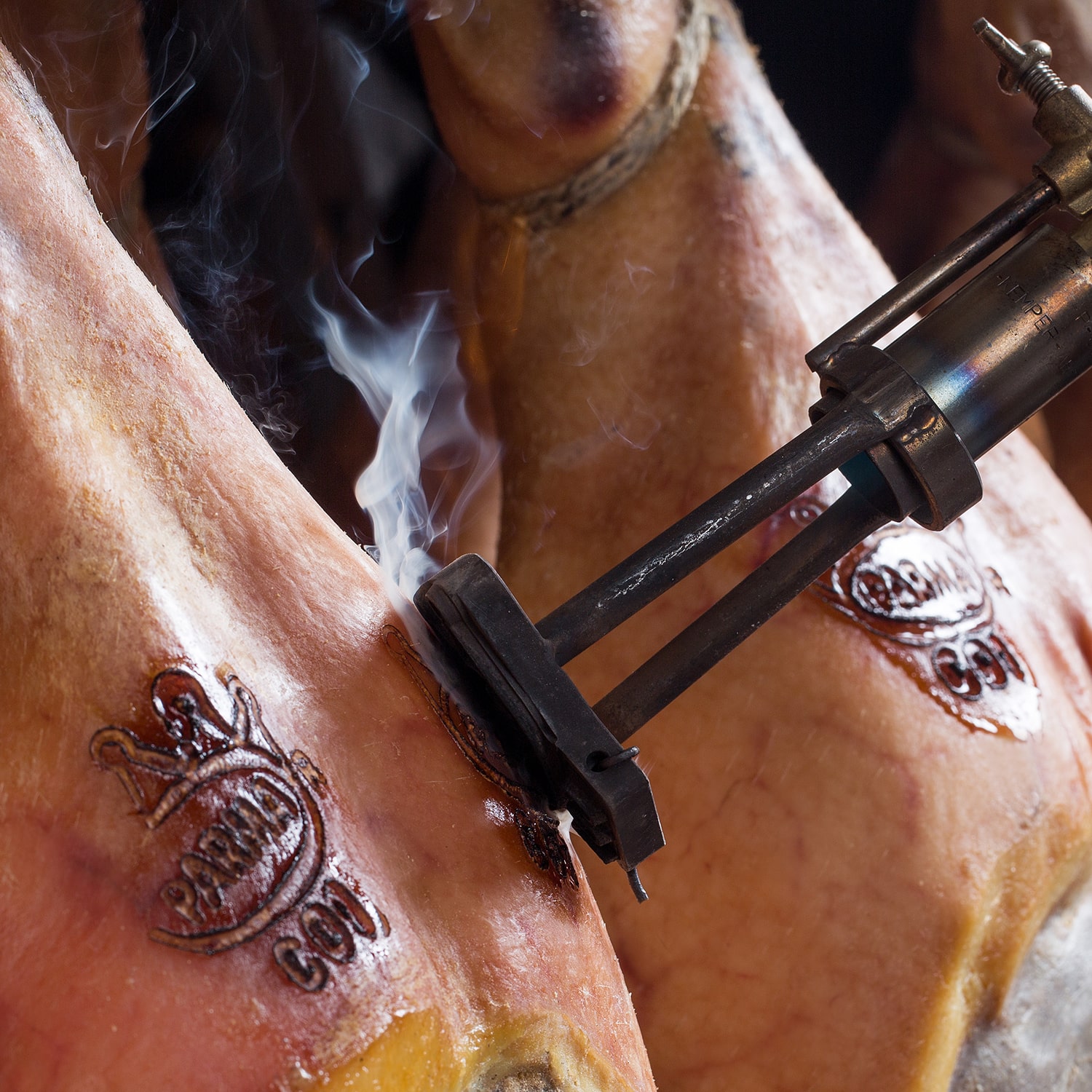Making a Parma Ham is a long and painstaking process; all producers of Prosciutto di Parma share one goal: To cure a leg of pork with pure sea salt in order to keep the meat as sweet-tasting and as supple as possible. The hams are made from the rear haunches of the pig; The curing is controlled carefully so that the ham absorbs only enough salt to preserve it. By the end, a trimmed ham will have lost more than a quarter of its weight through moisture loss, helping to concentrate the flavour. The meat becomes tender and the distinctive aroma and flavour of Parma Ham emerge.
Making Parma Ham
Arrival of the fresh legs
Producers of Parma Ham receive fresh legs from authorized slaughter houses on a weekly basis; the average weight is around 15 kg.

Salting
The legs are first salted by a highly trained maestro salatore, or salt master: the pigskin is covered with humid sea salt, while the muscular parts are covered with dry salt. The leg is then refrigerated at a temperature ranging from 1°C to 4°C, with a humidity level of approximately 80% for about a week and gets a second thin coating of salt which is left on another 15 to 18 days. depending on weight. Salt is the only preservative used in the processing method, no chemical elements are allowed. And here is another big difference from other generic prosciuttos, normally containing nitrites and nitrates.
Resting
Next the hams hang for a period ranging between 60 and 90 days in refrigerated, humidity-controlled rooms, at 75% humidity. The meat darkens but will return to its original rosy colour in the final days of curing.
Washing and Drying
The hams are washed with warm water and brushed to remove excess salt and impurities, then hung in drying rooms for a few days.
Initial Curing
Now the hams are hung on frames in well ventilated rooms with large windows that are opened when the outside temperature and humidity are favourable; this allows for a constant and gradual drying of the hams. Connoisseurs believe that this period is critical to the development of Parma Ham’s distinctive flavour. By the end of this phase, which lasts about three months, the exposed surface of the meat has dried and hardened.

Greasing
The exposed surfaces of the hams are softened with a paste of minced lard and salt in order to prevent the external layers drying too rapidly.

Final Curing
In the seventh month, the ham is transferred to the “cellars”, rooms with less air and light and hang on racks until the curing is completed. During the seasoning, important biochemical and enzymatic processes occur which determine the typical Parma Ham flavour, perfume and taste and the easy digestibility. The weight loss during the curing is about 5%.

Branding
At the end of the ageing period, which is by law at least 14 months starting from date of first salting (and some may be cured as long as 3 years), a horse bone needle, which rapidly absorbs the product fragrances, is inserted in different parts of the ham and smelt by experts who can verify the development of the production process. Only then are the hams ready for the official stamp of certification: the firebranding with the Ducal Crown. The firebranding is the final guarantee that all the processing stages have been carried out correctly.
The inspectors of an independent certifying body check the ageing period from the registers and the seal on the ham and they ensure that the hams have conformed to all the processing procedures.
